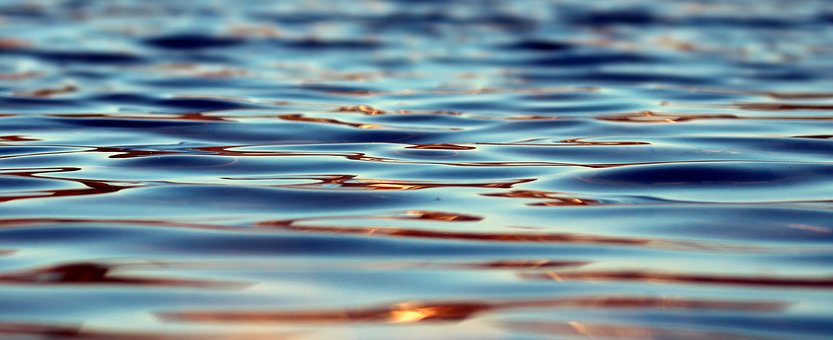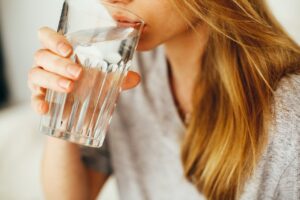Water. A substance none of us can survive without. Every living cell in the human body needs water to function.
With the human adult body made up on 60% water, the need to hydrate our body is important. The maximum time that we can go without water is a week, while 3-4 days without hydration could prove devastating for our health and wellbeing.
While water may be important for our health, clean and safe drinking water is paramount.
Water purification is the removal of contaminants in raw water, to produce drinking water that is pure enough for human consumption. Contaminants can include cryptosporidium, giardia, bacteria, algae, viruses, fungi, minerals and man-made chemical pollutants.
With a number of water purification methods available, we have done the research and explained the many ways that you can begin purifying water.
Why should you purify water?
If you are a keen camper who enjoys their down time spent outdoors within nature, or you find yourself travelling across multiple countries, finding clean drinking water can be hard. This is where purifying water can come into play. This cleaning and filtering of the water can protect your from viruses and bacteria that can live happily within fresh water.
These bacteria and viruses can include E.coli, salmonella, as well as hepatitis A. When consumed these bacteria can live within your stomach, only witnessed through the experience of nausea, cramps and sickness. Making sure that your water is 100% clean is important in avoiding any unwanted illness.
Not just able to remove unwanted bacteria and viruses, helping to eliminate those diseases, the purification of your water can also eliminate dust, dirt and rust.
1 – Filtration:
This purification technology involves using a filter to remove particles and solid matter from liquid, thus providing ‘clean and pure’ water. Water filter systems are used in a plethora of businesses, and at a domestic level in our homes. One of the most common methods to clean water, filtration is simple to do and even portable, perfect for active people wanting clean water when camping.
Many homes even include a built-in water filtration system connected to their sinks and fridges for clean water at any time.
2 – Sedimentation:
Using gravity, this process allows particles suspending in water to settle out of the suspension. These particles then become sediment. A process also referred to as mechanical filtration, this method captures before removing debris and dirt from your water. Whether rust or soil, this method of filtering removes only visible matters. Leaving behind bacteria and chemicals still within the water.
Available in a range of different devices, sediment filters can be seen within our homes, pools and restaurants to help remove and serve cleaner and safer water.
3 – Distillation:
This method purifies water through boiling and cooling. When water is heated past a certain point, vapour is formed and then the vapour is condensed to form liquid again. The process is used to separate substances that have a different boiling point in a liquid for purification purposes.
One of the most effective ways to clean water and remove all unwanted contaminants and that is distillation. A perfect method for campers and those travelling or finding themselves without a clean water supply. All you need is a pot to boil the water, a container to collect the created condensation, a tube and a heat source.
Any contaminants and bacteria that were living in the water will be removed as contaminants are unable to exist within the steam. This creates clean water.
4 – Slow Sand Filters:
This is a procedure where contaminated water goes through a sand filter which is a container with a system of pipes with holes. The container is covered by 6 inches of gravel, which in turn is covered by 3 feet of sand. Contaminated water flows over the top of the sand, through to the gravel and then to the pipes on the bottom. Interestingly, there are microorganisms present in sand that break down toxins in the water, further purifying it. Through hydraulic pressure, water (which is now purified) then flows back up.
An effective way to remove both bacteria and viruses, this water purification method is often installed in rural, semi-urban areas to ensure the cleanliness of water for the community. A useful method to create large quantities of clean water for many households, this method can turn fresh water into safe and clean drinking water.
5 – Reverse Osmosis:
This is a biological process where water is pushed through a semi-permeable membrane under pressure, thereby removing the majority of the contaminants in the water.
Available to be brought online and in your local hardware stores, this water filtration system is best suited to be use within the home. A popular choice, these purification methods can remove metals, bacteria and even viruses from the water. Easy to be set up within the home, to ensure clean and safe drinking water for the family, consider a reverse osmosis water system.
6 – Ultraviolet Light:
Excellent for disinfecting bacteria and waterborne pathogens from water, ultraviolet light works by disabling bacteria and viruses by attacking their DNA.
Treating fresh water and turning it into safe drinking water, this ultraviolet light can do this through the UV wavelength attacking the DNA of the living organisms within the water. This when completed can ensure that the bacteria is unable to keep reproducing and when consumed, will no longer make you sick.
When installing an Ultraviolet light water purification system into the home, this you would place at the point of entry of the water. This can ensure that the water is then safe and clean as it makes it way around the house.
7 – Flocculation:
This is a physical process whereby a polymer induces the settling of particles in water, which eventually grows into a large flake. Created through a form of chemistry, this cleaning of the water through the creation of a large flake is developed through the addition of a clarifying agent.
Unlike some of the other water purification methods mentioned in this article, flocculation is most commonly used by water companies and wastewater treatment industries to clean the water. Helping to turn dirty water, whether sewage, storm or wastewater, into fresh drinking water.
8 – Coagulation:
This is a chemical process whereby a coagulant is mixed with water to destabilise colloidal suspensions.This water purification removes large particles through the addition of iron or aluminium salts to the water which release a positive charge. This positive charge cleans the water by binding together the particles before they can settle to the bottom and be filtered and removed. This is another top water filtering method that is used by large water treatment companies to help clean large quantities of water.
Summary
These water purification methods are only a handful of the effective processes we have available today to purify water.
Whether portable options that you can use when out and about and in need of fresh, clean drinking water. To a DIY-water purification system that you can make from a few odd items lying around the house. The need for clean and safe drinking water that is free of bacteria and virus is paramount in ensuring our overall well being.
We have also reviewed some other top methods to cleaning fresh water that can be added into our homes and water systems, but also methods used by large water companies.
Are you keen to review and upgrade your water purification system within the home? If so, then look no further than European WaterCare, the UK’s leading independent manufacturer of commercial water softeners, water filters and calcium treatment units.

